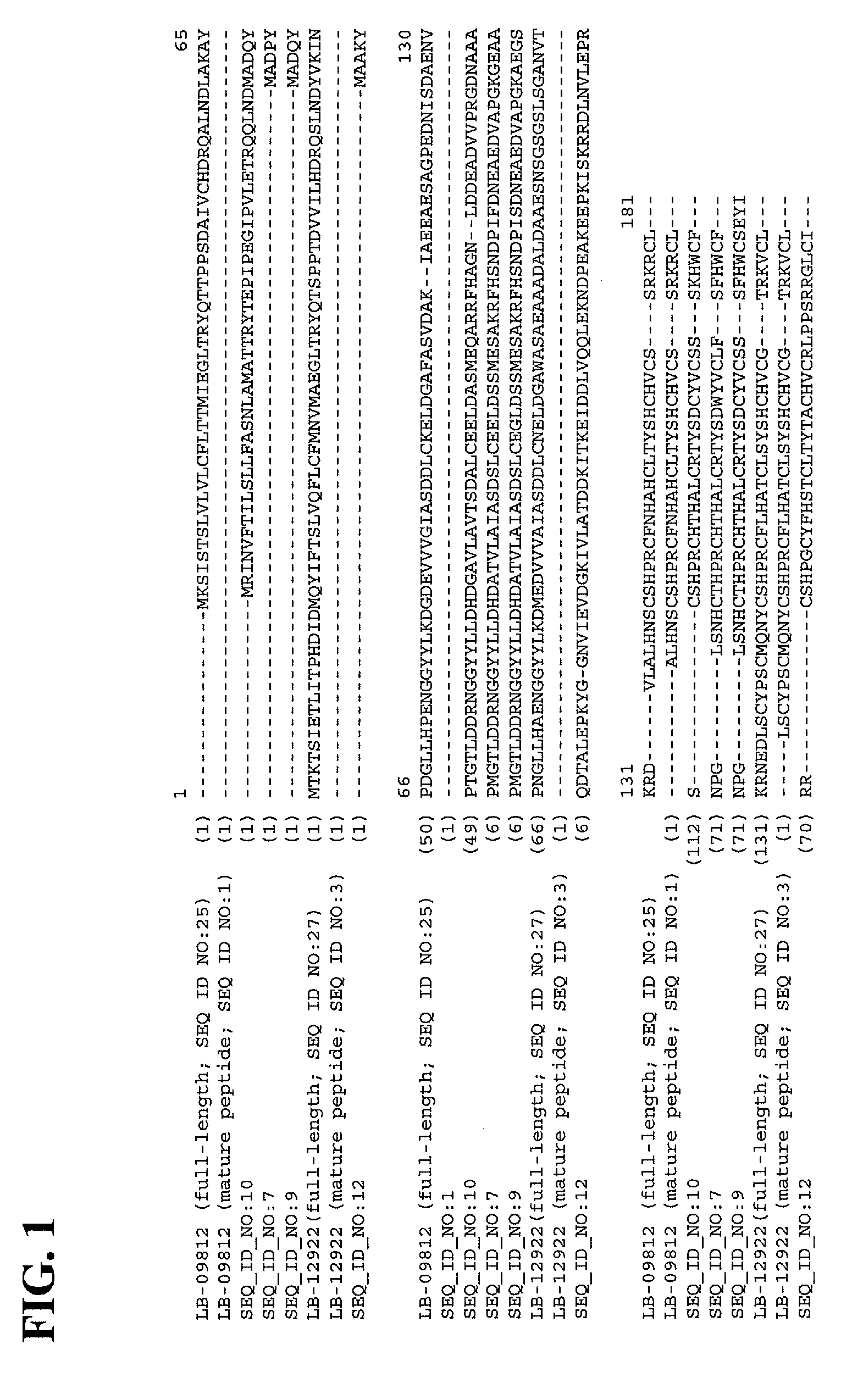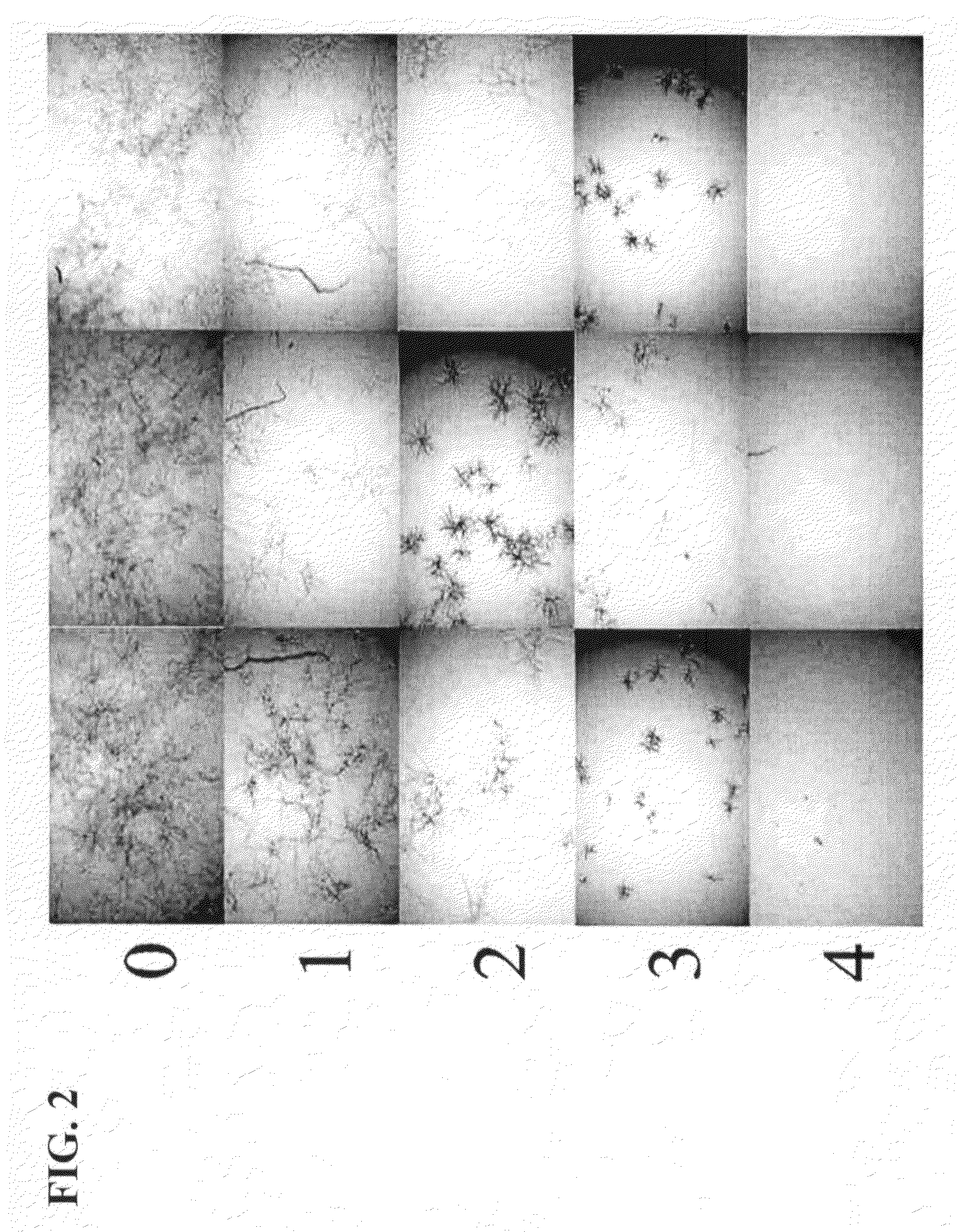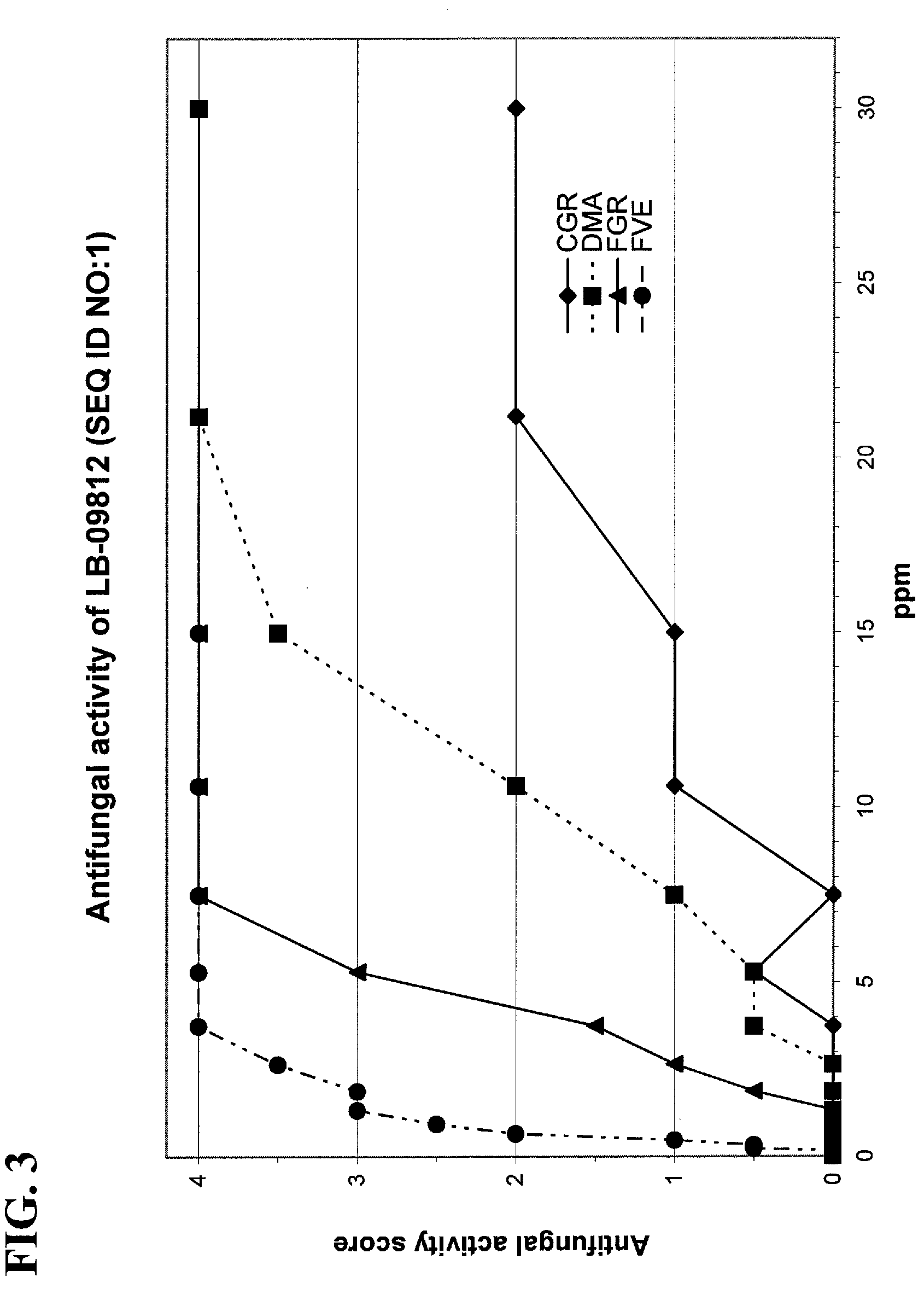Antifungal polypeptides
a polypeptide and antifungal technology, applied in the field of polypeptides having antipathogenic properties, can solve the problems of increasing the cost of farmers, limiting agricultural productivity, and huge losses of marketable food, fiber and feed, and achieve the effect of increasing the resistance of the pathogen
- Summary
- Abstract
- Description
- Claims
- Application Information
AI Technical Summary
Benefits of technology
Problems solved by technology
Method used
Image
Examples
example 1
Isolation of Antifungal Polypeptide LB-09812
SEQ ID NO:1
[0133]A soil sample was collected from rotten pieces of wood from the tree Populus tremula L., in the Kiev region. The fungal isolate of interest, denoted herein as IMV 01051, that produced the antifungal polypeptide SEQ ID NO: 1, was isolated using potato dextrose agar. The strain was later identified as Penicillium glandicola (Oudemans) Seifert et Samson. The pure culture of the organism has been maintained at room temperature on malt extract agar slant by sub-culturing it in regular intervals. Isolate IMV 01051 was transferred to Berkeley Lab where the cultures were grown on PDA and preserved by placing 10 agar plugs per strain sampled with sterile P1000 plastic tips into 2 mL cryotubes containing 0.7 mL 45% (w / v) sterile glycerol. The cryotubes then were placed in a wooden block and frozen overnight in a −20° C. freezer at an approximate freezing rate of 1° C. / min. The now frozen material was transferred to a −84° C. freezer...
example 2
Isolation of Antifungal Polypeptide LB-12922
SEQ ID NO:3
[0145]A cultivated agricultural soil sample in the Temapol region, Ukraine, was isolated about twelve years after the Chernobyl nuclear accident. The fungal isolate of interest, denoted herein as LB-12922, that produced the antifungal polypeptide SEQ ID NO:3, was isolated using potato dextrose agar. The strain was later identified as Penicillium citreonigrum Dierckx. The pure culture of the organism has been maintained at room temperature on malt extract agar slant by sub-culturing it in regular intervals. Isolate LB-12922 was transferred to Berkeley Lab where the cultures were grown on PDA and preserved by placing 10 agar plugs per strain sampled with sterile P1000 plastic tips into 2 mL cryotubes containing 0.7 mL 45% (w / v) sterile glycerol. The cryotubes then were placed in a wooden block and frozen overnight in a −20° C. freezer at an approximate freezing rate of 1° C. / min. The now frozen material was transferred to a −84° C...
example 3
Antifungal Activity of Polypeptides LB-09812
SEQ ID NO:1
[0156]The antifungal activity of the polypeptide of SEQ ID NO: 1 against the fungal pathogens Fusarium verticillioides (FVE), Colletotrichum graminicola (CGR), Fusarium graminearum (FGR) and Diplodia maydis (DMA) was assessed using a standard plate assay.
[0157]Specifically, an E. coli transformation vector comprising a nucleotide sequence that encodes the polypeptide of SEQ ID NO: 1 fused to a His-tagged maltose binding protein via a factor XA cleavage site was generated and used to express the fusion protein in E. coli. The fusion protein was then affinity (Ni-NTA)-purified, and the protein preparation was subjected to Factor XA cleavage. The desired LB-09812 peptide (SEQ ID NO:1) was then purified by HPLC, and the purity and mass of the peptide verified by LCMS. Purified peptide was quantified and used in standard assays to measure antifungal activity, as described below.
Preparation of Cultures for Spore Production:
[0158]Cultu...
PUM
| Property | Measurement | Unit |
|---|---|---|
| temperature | aaaaa | aaaaa |
| temperature | aaaaa | aaaaa |
| pH | aaaaa | aaaaa |
Abstract
Description
Claims
Application Information
 Login to View More
Login to View More - R&D
- Intellectual Property
- Life Sciences
- Materials
- Tech Scout
- Unparalleled Data Quality
- Higher Quality Content
- 60% Fewer Hallucinations
Browse by: Latest US Patents, China's latest patents, Technical Efficacy Thesaurus, Application Domain, Technology Topic, Popular Technical Reports.
© 2025 PatSnap. All rights reserved.Legal|Privacy policy|Modern Slavery Act Transparency Statement|Sitemap|About US| Contact US: help@patsnap.com



